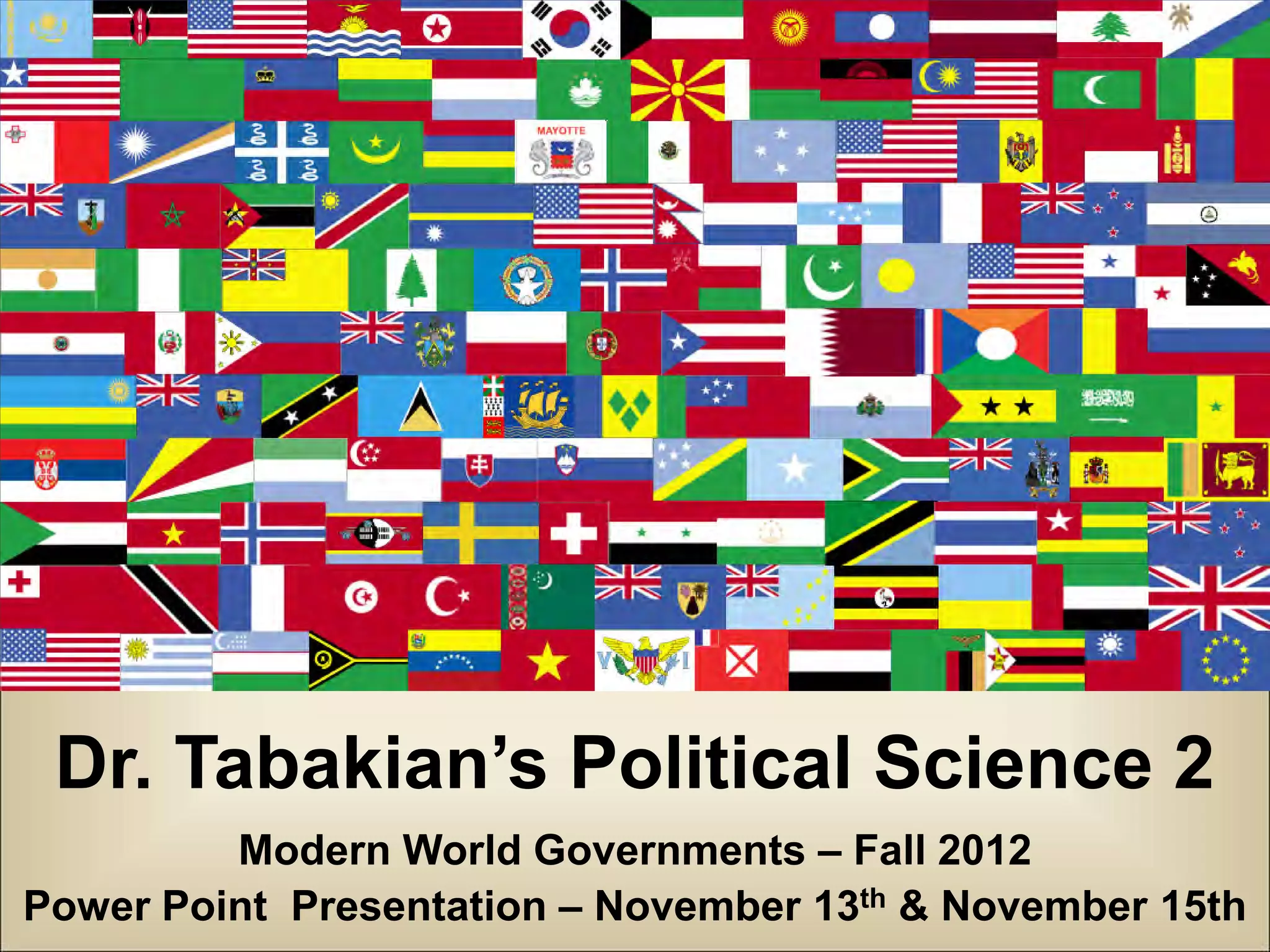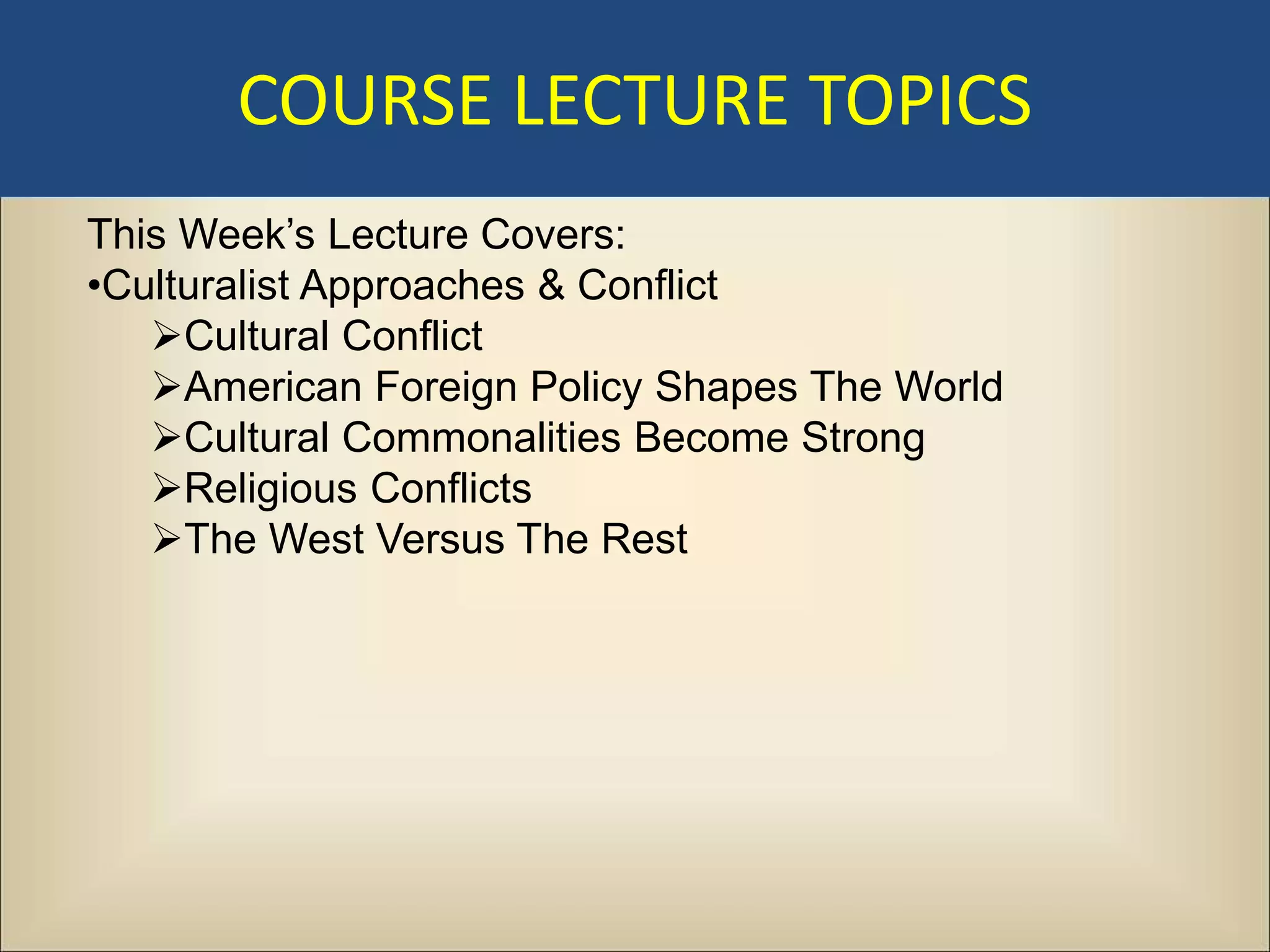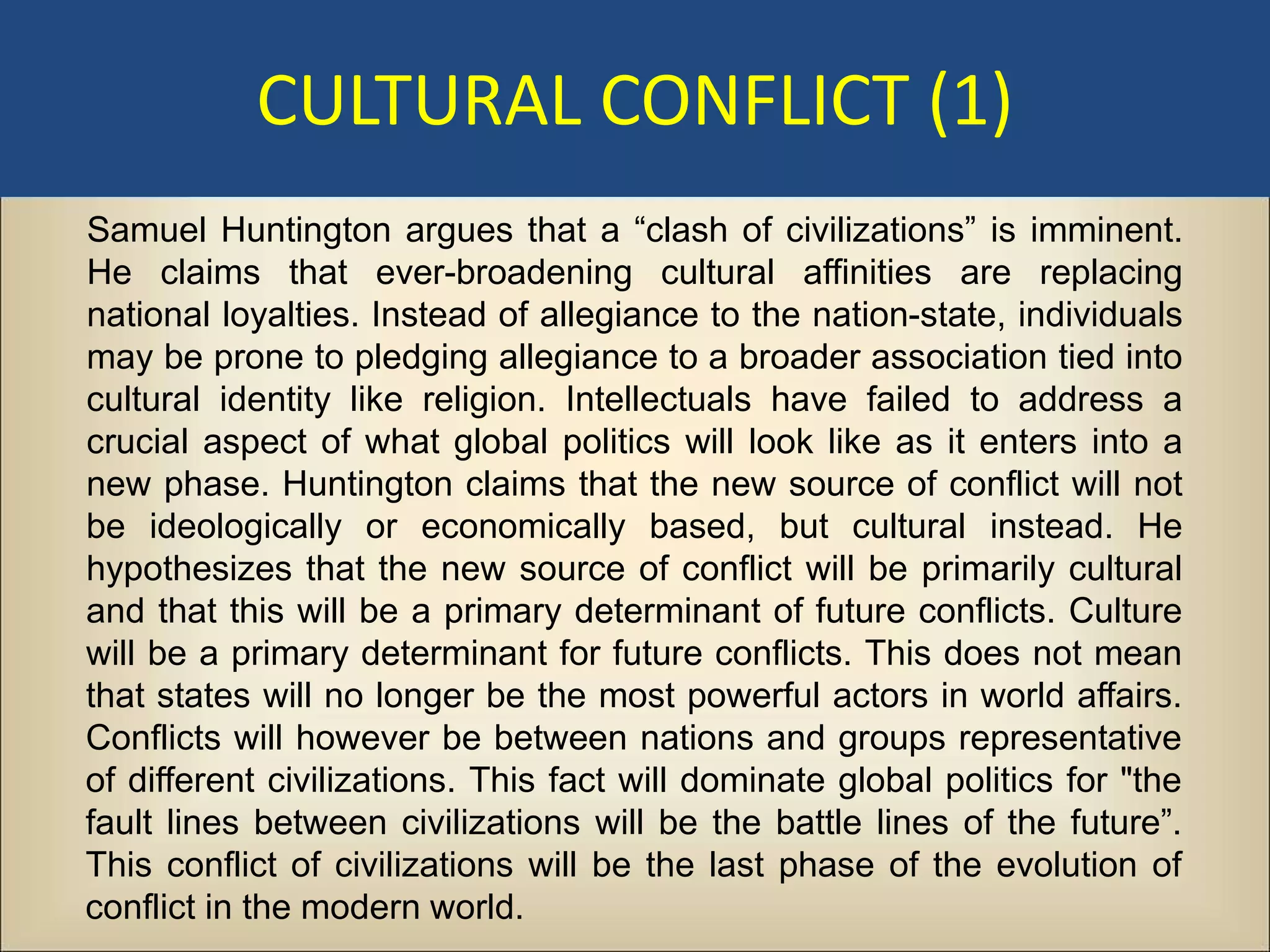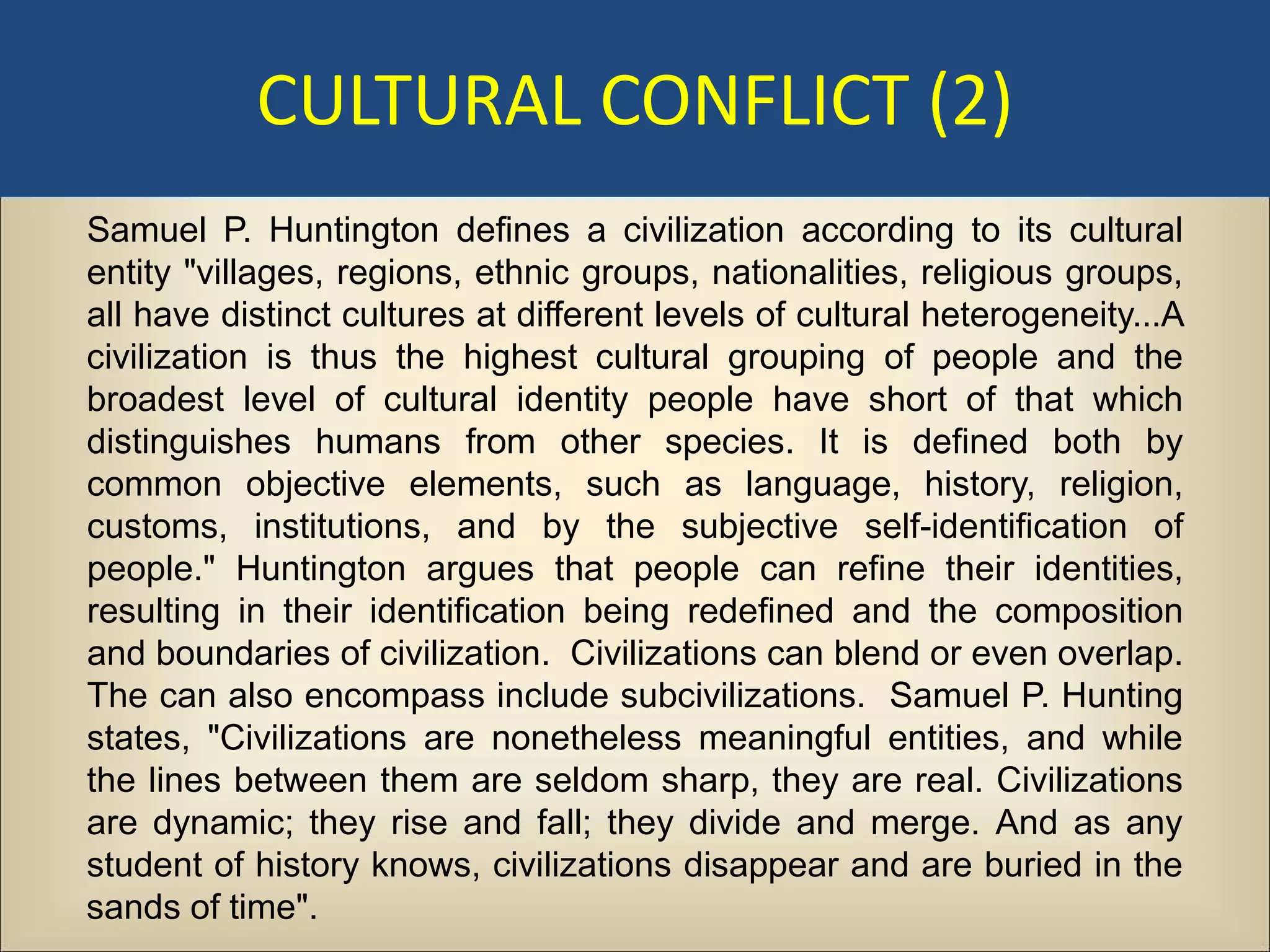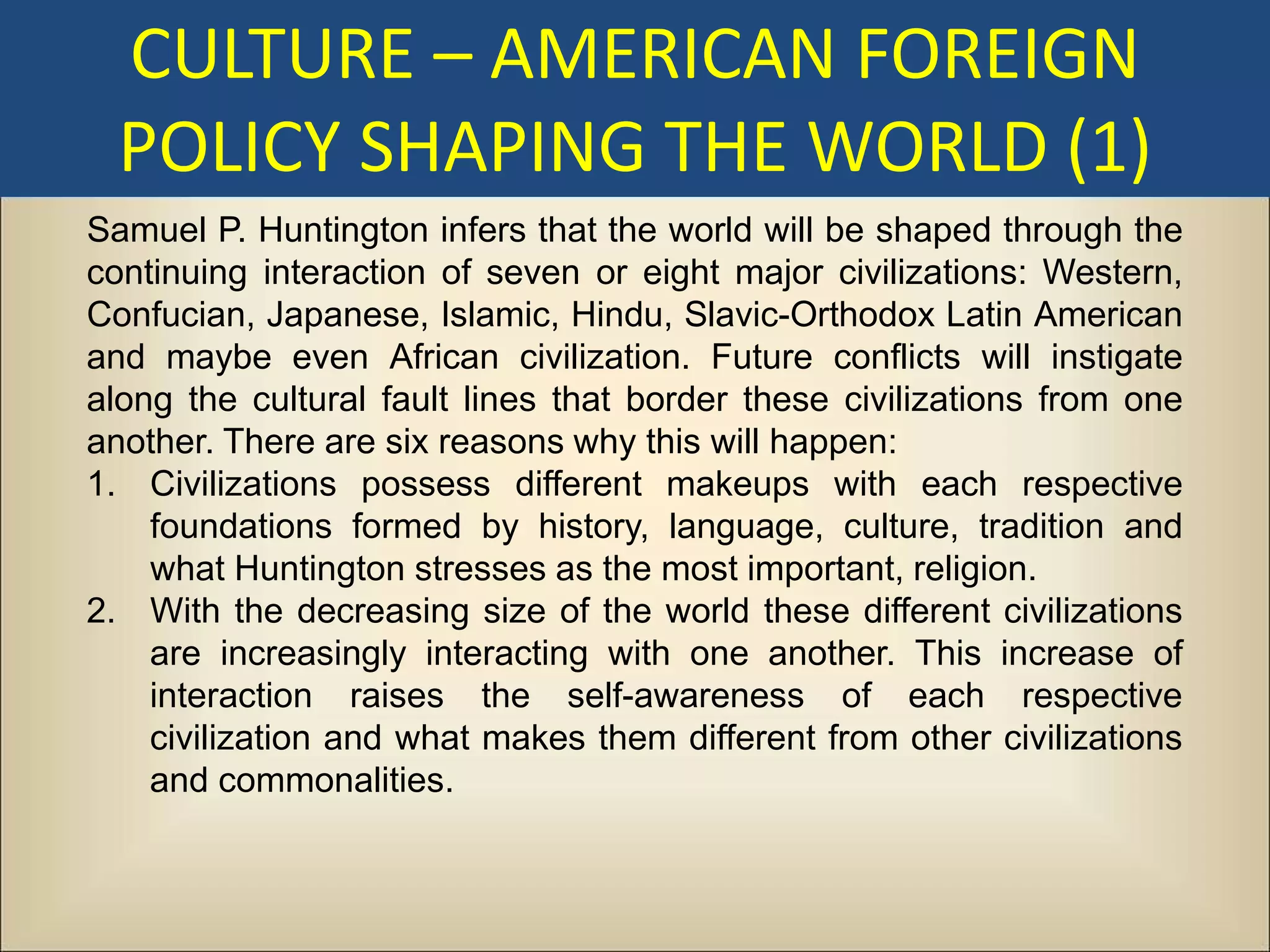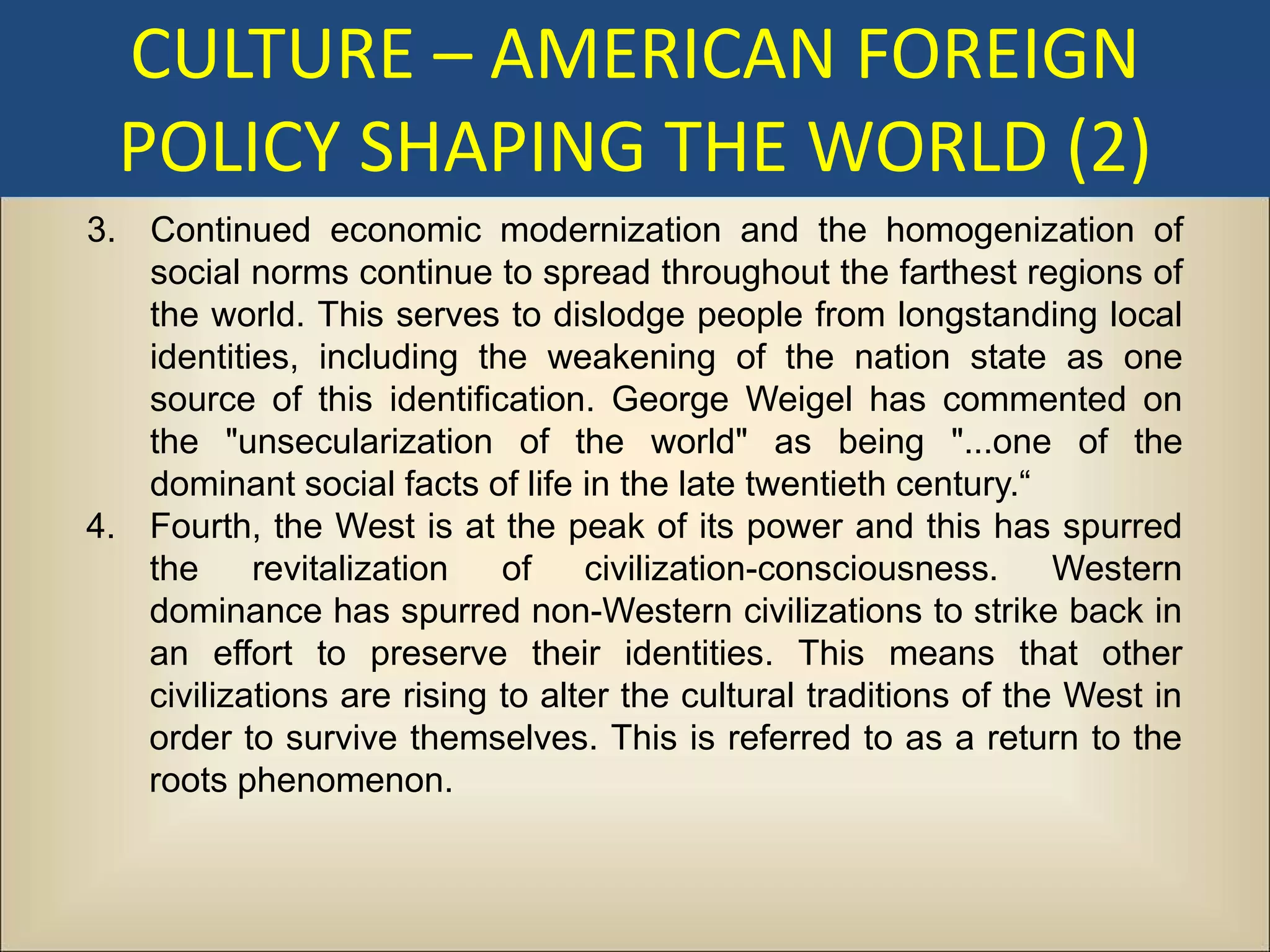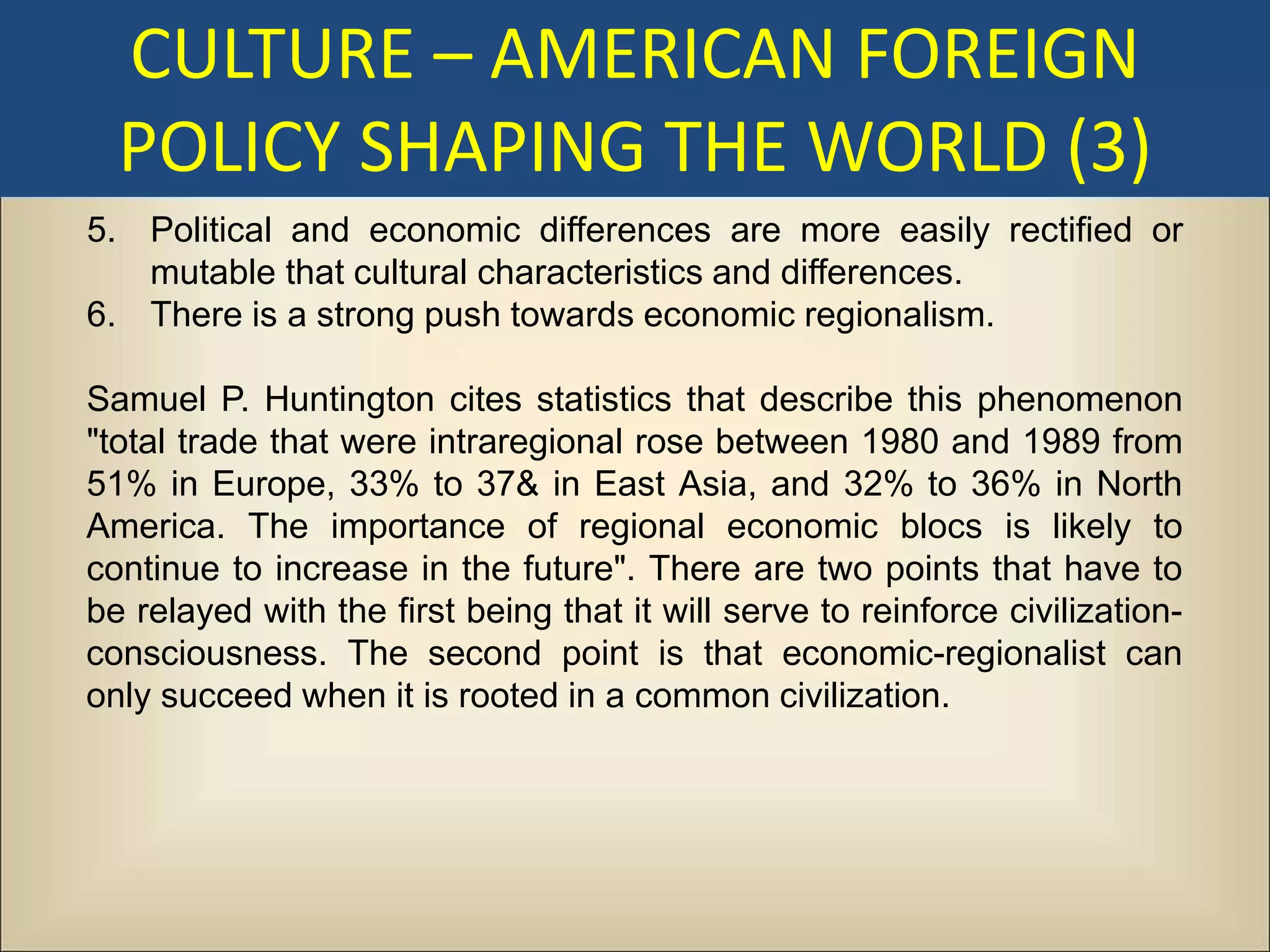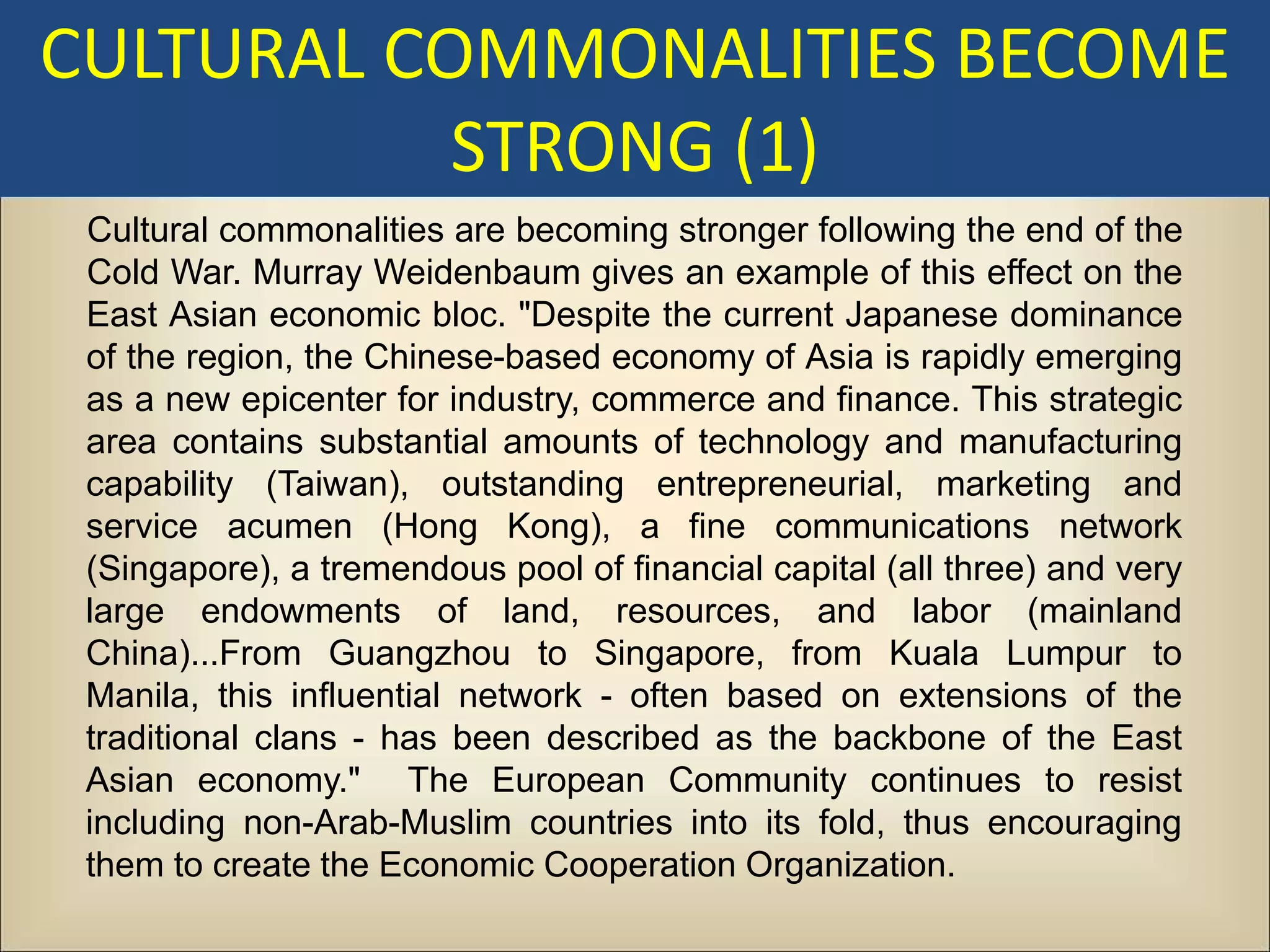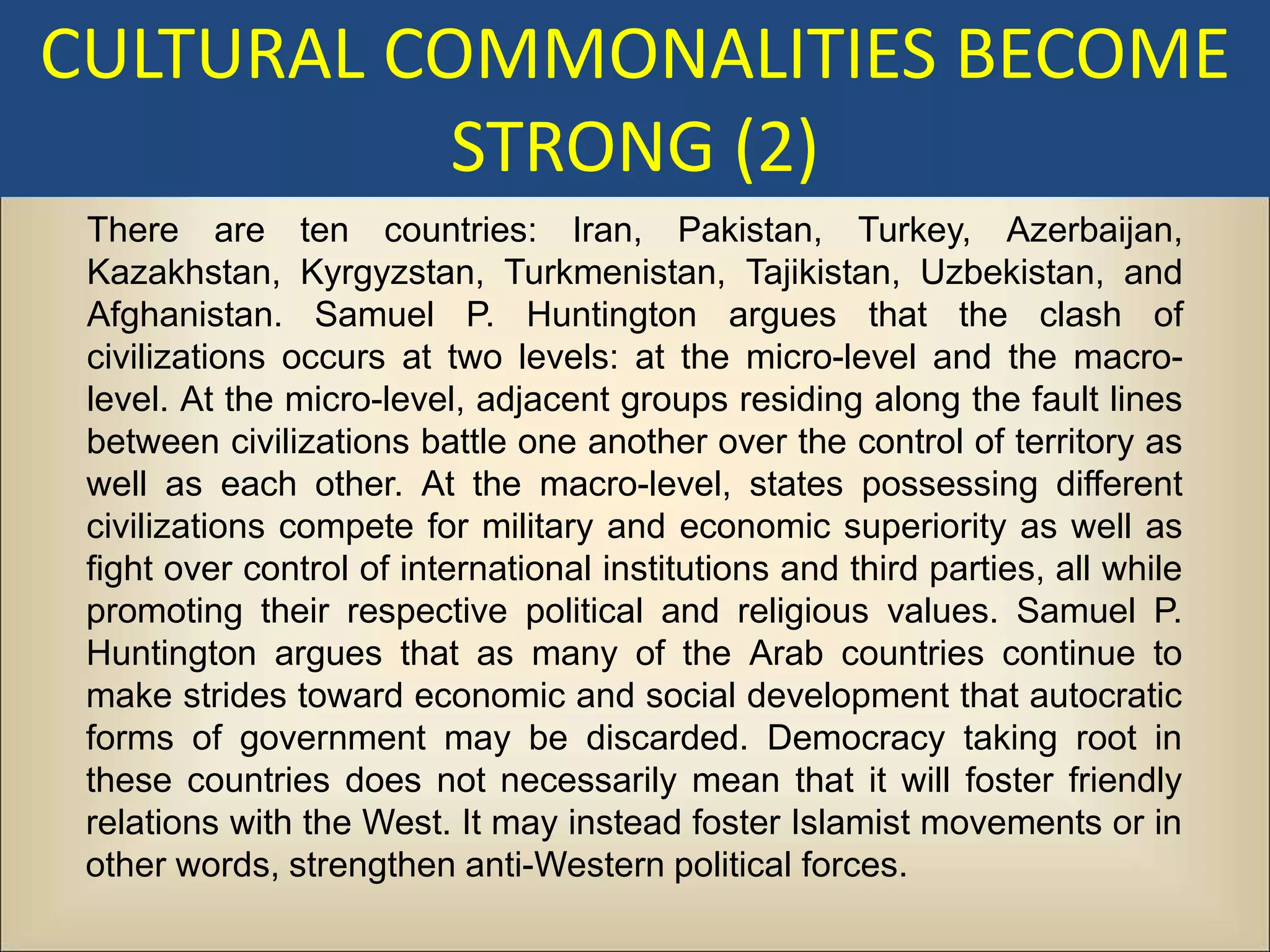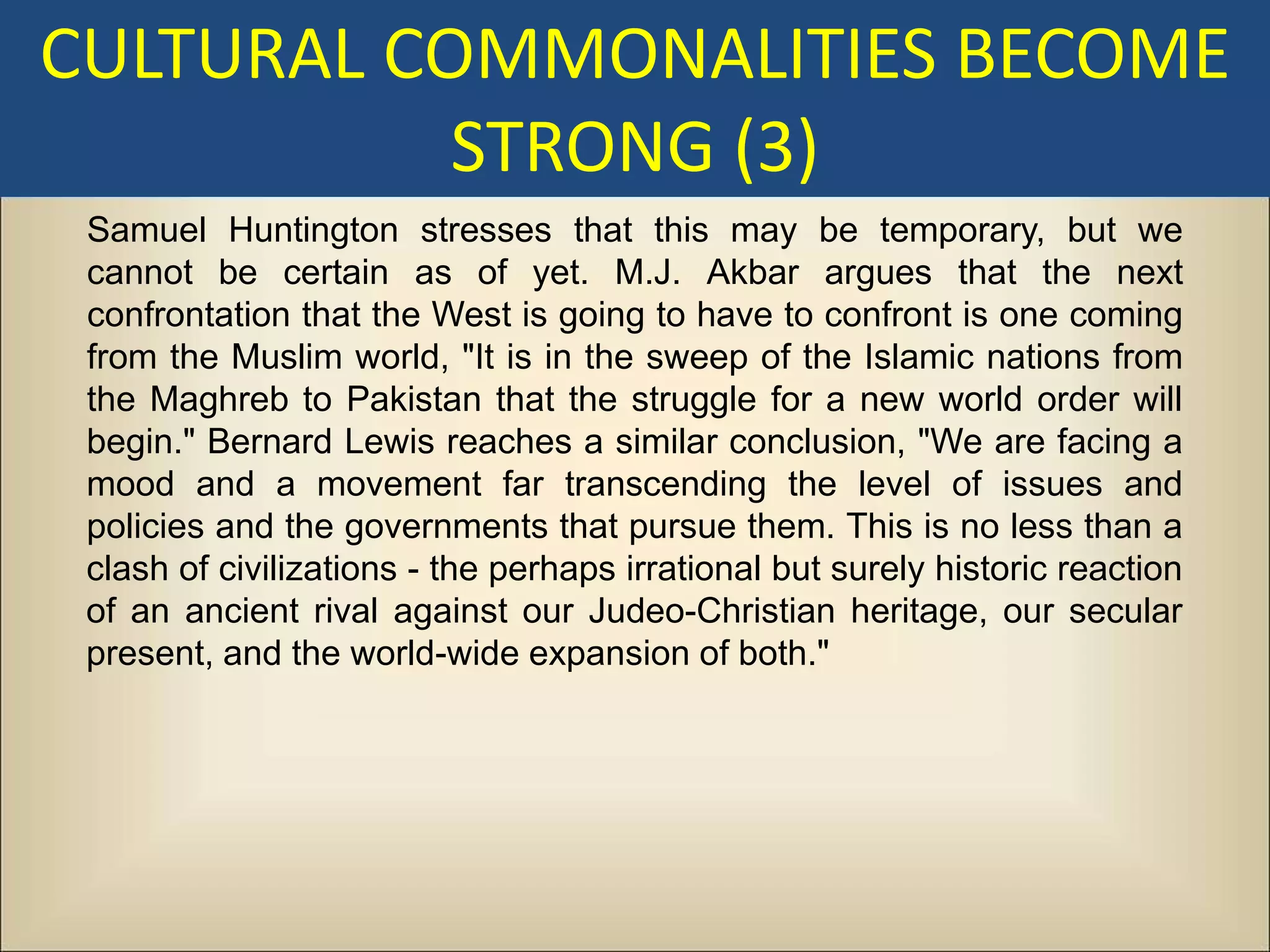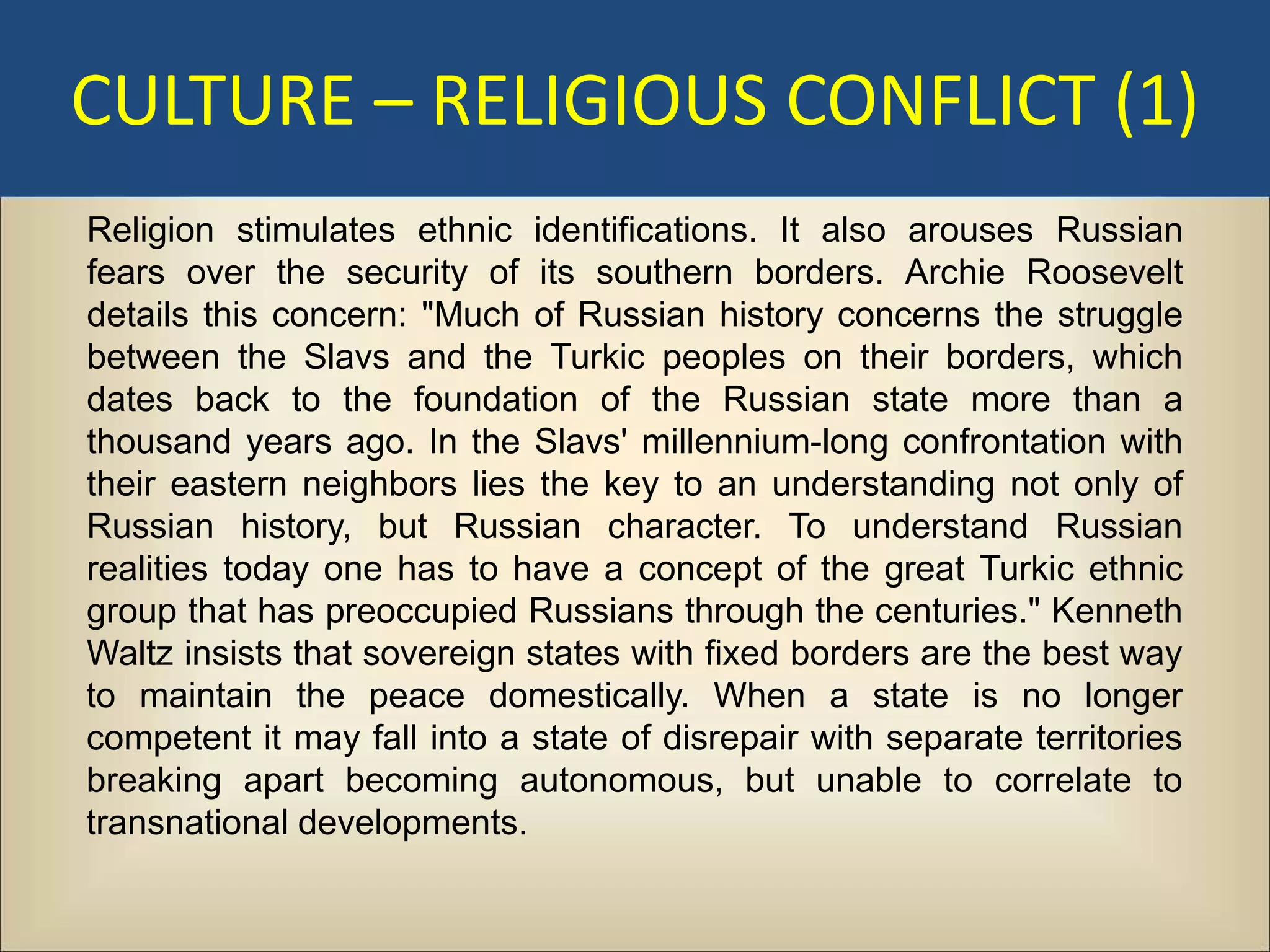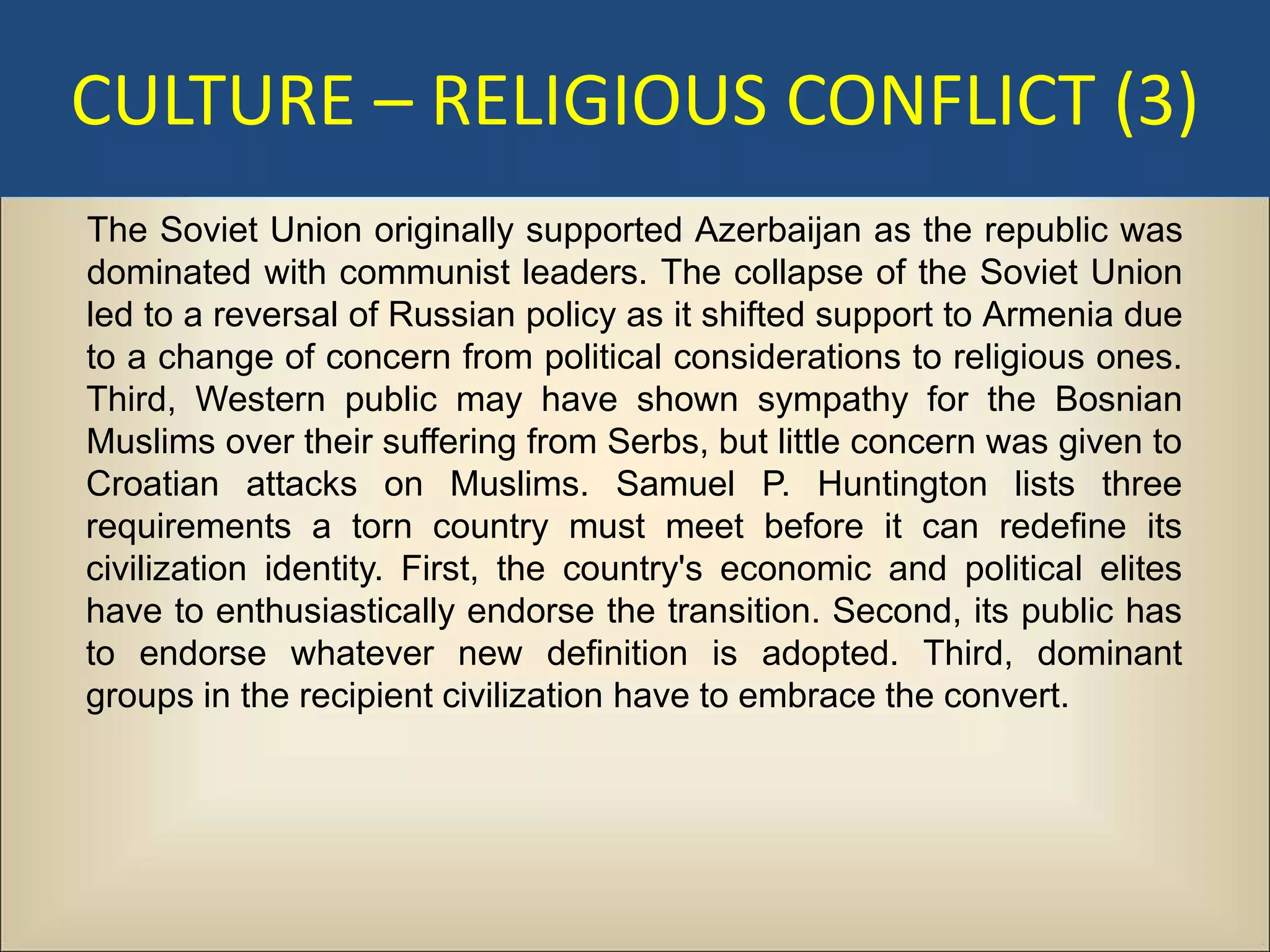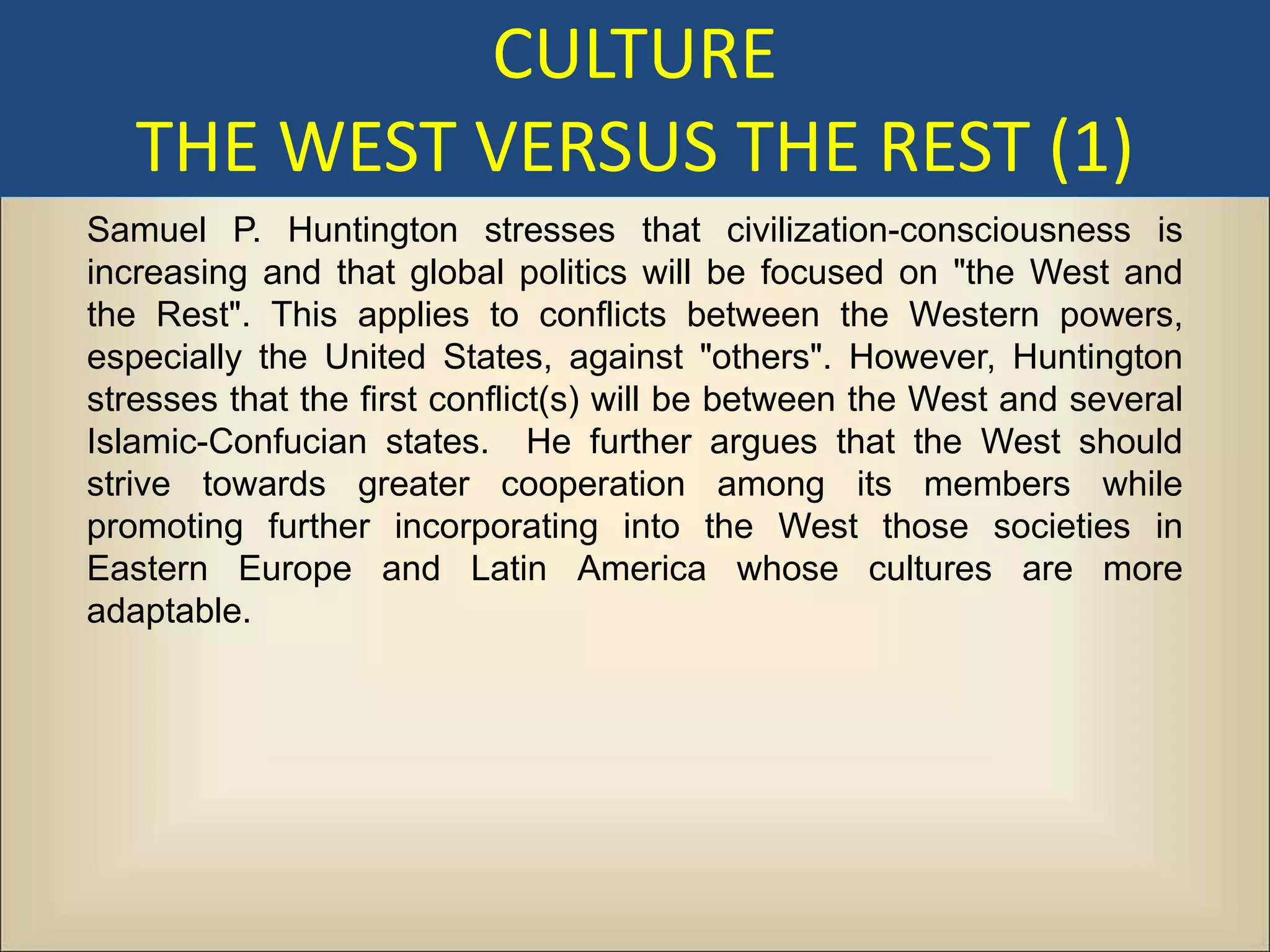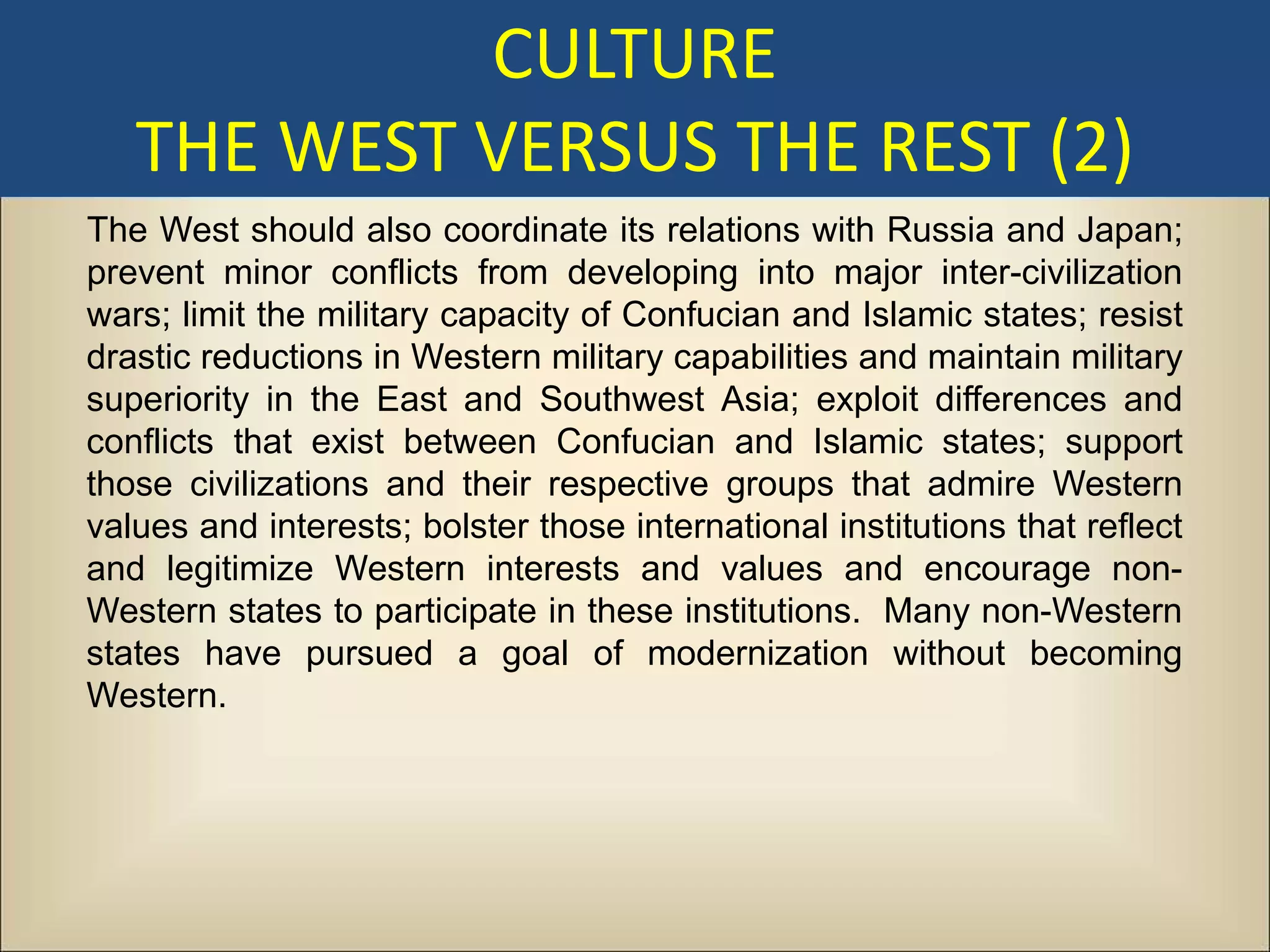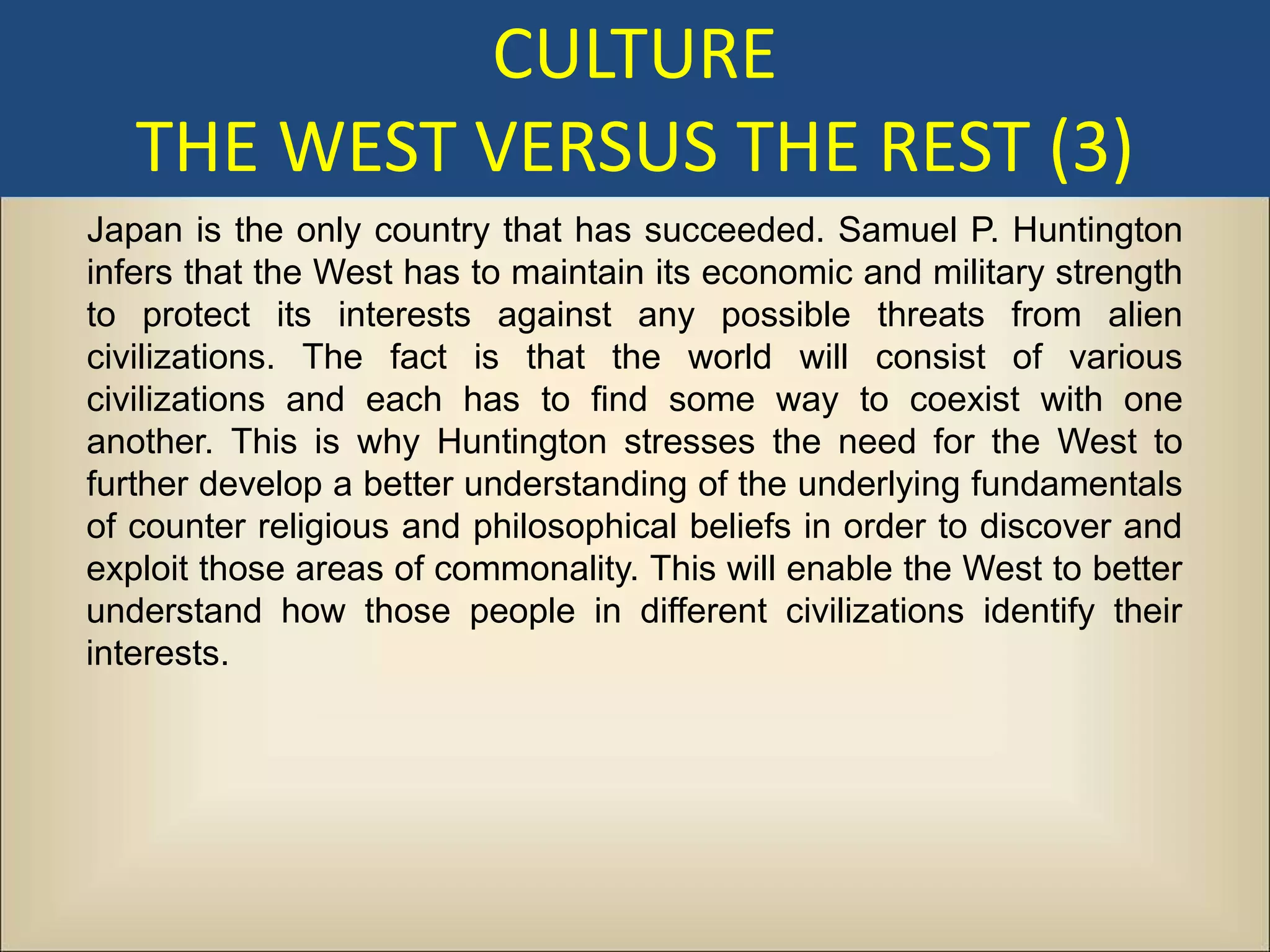Dr. Tabakian's lecture discusses Samuel Huntington's theory of a 'clash of civilizations', emphasizing that cultural conflicts will replace ideological ones as the primary source of global discord, with future conflicts arising between distinct civilizations. It highlights the increasing significance of cultural affiliations, particularly in shaping American foreign policy and global politics, and suggests that the interactions of major civilizations will define contemporary and future conflicts. The lecture also explores the complexities of religious and ethnic identities, their role in international relations, and the need for the West to understand and navigate these cultural differences to maintain its position in the world.
